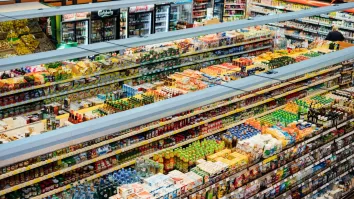Korean culture drives Southeast Asia sportswear trends
The global sportswear industry is expected to grow about 7% annually until 2027.
Korean pop culture and innovation are key drivers of the sportswear market in Southeast Asia, according to Sanjay Roy, Managing Director of PUMA Group. As the region continues to embrace Korean trends in fashion and music, sportswear brands like PUMA are strategically positioning themselves to capture this growing demand.
"I think Korea is becoming a new centre of innovation and hub, and everything Korean is working quite well, including fashion music, and we see the great results that's coming through," Roy said.
PUMA has recently signed Rosé from the K-pop sensation Blackpink as a brand ambassador, a move that Roy believes significantly impacts their market presence. He said that this partnership aims to leverage the popularity of K-pop and its stars to connect more deeply with Southeast Asian consumers, who are increasingly influenced by Korean culture.
Another factor influencing the sportswear market in Southeast Asia is the rising interest in performance gear, particularly for running and fitness activities. "The other big topic that we see is the drive of performance, especially on the running side, and how running and performance products are picking up in the market," Roy mentioned.
To keep up with these evolving trends, PUMA is making significant strides in digital transformation. Roy said that the brand has expanded its e-commerce presence across all markets and embraced social media platforms like TikTok and Instagram to engage with younger consumers.
Roy noted that this shift to digital channels allows PUMA to present a more dynamic and interactive brand image, resonating more with today's youth. "We went live on Instagram and we saw how the consumers are reacting to a more dynamic point of view, rather than a more static point of view, and that's making a big difference," he said.
Digital transformation at PUMA is not limited to customer engagement; it also extends to enhancing operational efficiency. "Digital transformation is happening both on the front end and on the back end," Roy explained. On the supply side, PUMA is investing in advanced technologies like SAP automation and AI to ensure optimal inventory management and timely product delivery.



















 Advertise
Advertise





